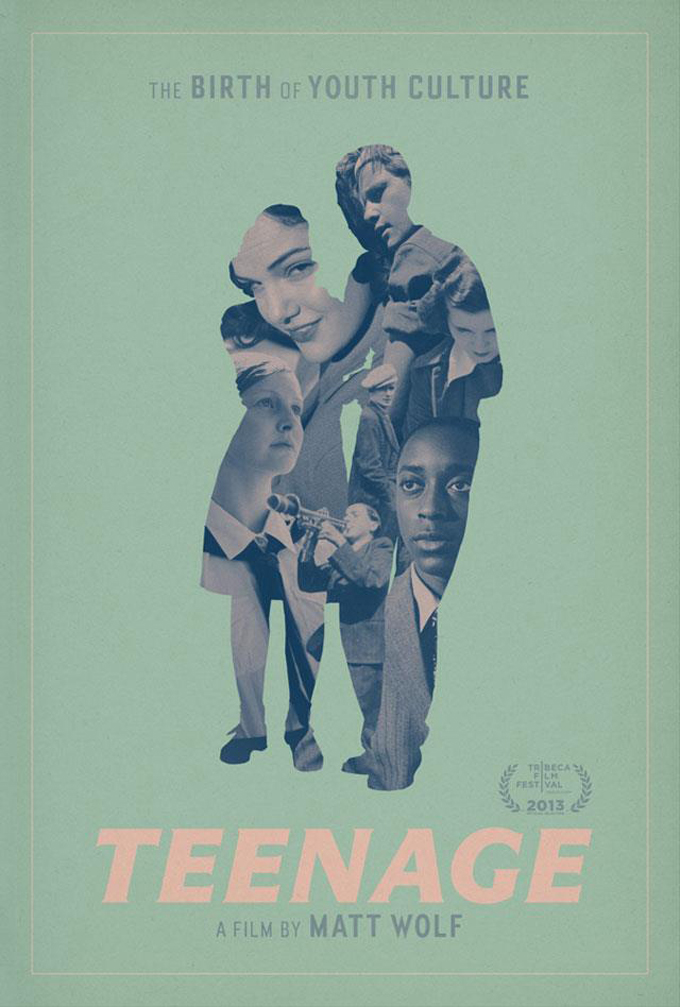“Youth culture”, a bandied about term to describe everything from dancing to drugs, is generally thought to be a product of a post-war mindset, hippies, and Elvis Presley. Not so, according to Matt Wolf, the maker of the startling “Teenage”. Based upon Jon Savage’s book, “Teenage” charts the rise of the teenager from 1904, when child labour was abolished. Faced with the promises of education and free time, the film charts the rise and rise “the third generation”. Charting two world wars, a civil rights movement and several dance crazes, “Teenage” moves at a speed that is sometimes dizzying; but it remains captivating throughout.
Starting in the twentieth century’s infancy, the film spans forty years. Flappers dance, young men drink too much and Wolf isn’t afraid to portray the downsides to the exotic lifestyle of the “Roaring Twenties”. The story of Brenda Dean Paul, a young socialite who became “the first junkie”, overshadows the glitter and glam of the 1920’s segment. It’s all very F. Scott Fitzgerald, though without seeming too preachy or condemning. Archival footage of the young and beautiful draws the audience into their world; so when they crashed, I did too. The footage of young workers during the Great Depression is heartbreaking to watch. Is it any wonder that youth movements sprung up as they did in the 1930’s? The reckless rage that is such a part of being adolescent is given an outlet here; images of protests and riots abound.
Wolf’s decision to use archival footage dubbed over by young actors is an unusual one. Jena Malone, Julia Strummer, Ben Whishaw and Jessie Usher “become” the youths on screen – they narrate in the first person, which is more than a little grating to begin with but quickly becomes quite natural. Wolf’s structuring of the film is as frenetic as adolescence – the film cuts between years, countries and crazes quickly, occasionally allowing the audio to linger as the visuals change. This is striking, to say the least – particularly as an American scene of a young girl ordering a milkshake fades to the horrors of Nazi Germany.
War plays a huge role in “Teenage”. The film doesn’t flinch away from the horrors of World War I and II, and there are a few deeply uncomfortable shots of young men, ruined by battle. The audience gets the impression that adolescence was brought to the brink by these wars – as one narrator says “the old sent us to die. And we hated them.” By far the most striking war story was that of a young Nazi sympathiser, who quickly rose up the ranks to becoming press officer for the party during the war. Wolf does a skilful job of trying to explain why so many young people joined the Hitler Youth – “it was about idealism”, explains Strummer’s lightly-accented German character, who eventually, heartbreakingly, resigns herself to “going under with the Reich”.
By splicing shots of dancing and gaiety against burning buildings and lines of young soldiers, Wolf leaves the viewer with the feeling that youth culture spent a lot of time under attack. Two wars that sent the young to the front line; constant bad press for the debauchery of new ideas and dizzingly high arrest numbers for young people, particularly in the states. The “third generation” feels shaky in the time period Wolf covers, which is part of why it’s so fascinating. It’s easy to make a film about the hip-shaking, war-hating hippies and punks of the 1950’s onwards – the period 1904-45 is certainly not one remembered for the waves of youths. But with so many lost in war and hopeless rebellion, remembering this generation is clearly something important – the stories of the four narrators come together to portray the teenager as we know it about to be born. It’s a nuanced, original look at a group of teenagers often overlooked, but one that their modern culture owes a lot to. On my way out of the cinema, I overheard a woman ask “but what about the obnoxious teenagers, then? Where were they?” I can’t help but feel she was missing the director’s point in bringing history to joyful, vivid, lustful life.

